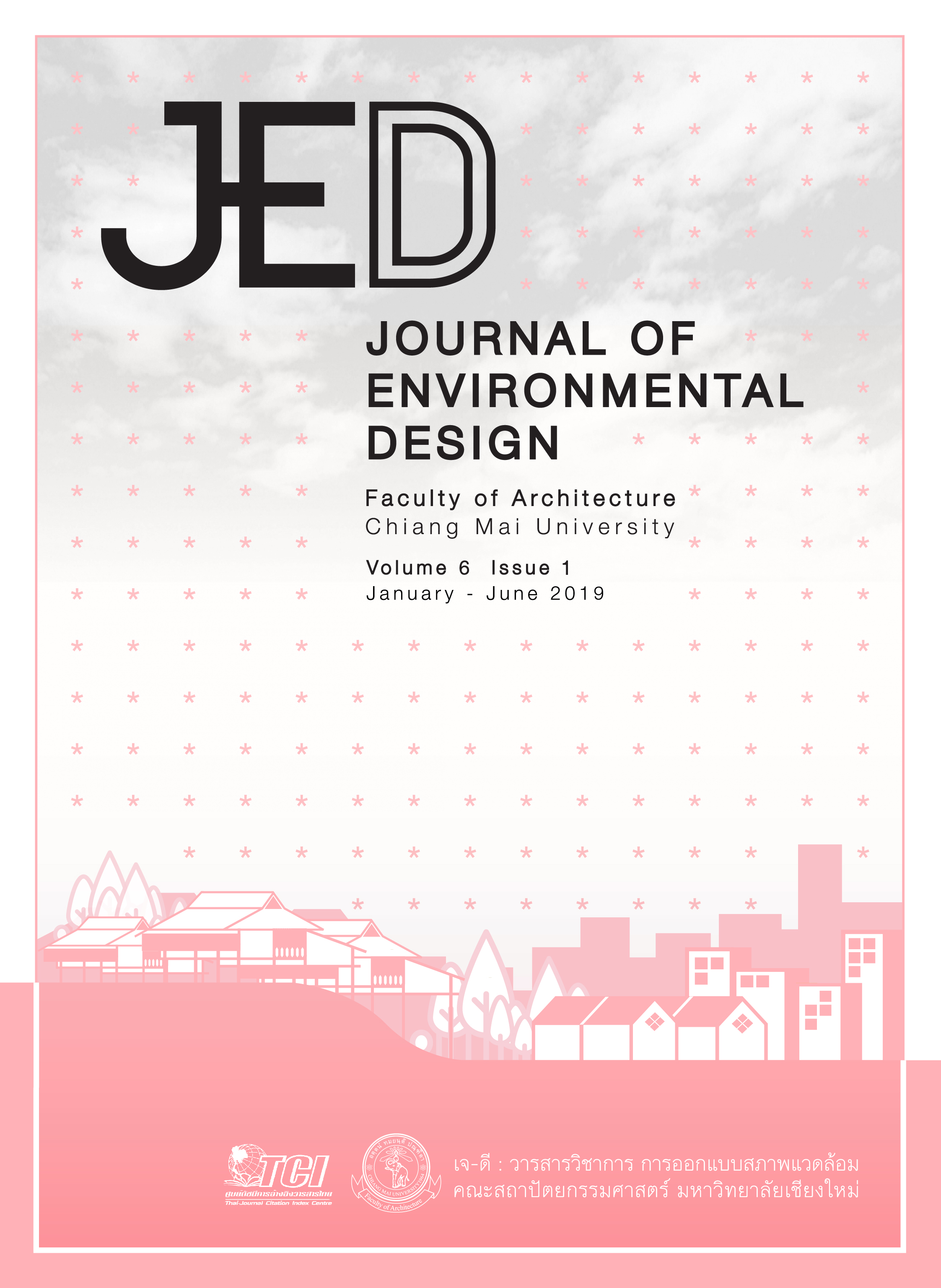The กระบวนการพัฒนาโครงการอสังหาริมทรัพย์ประเภทที่อยู่อาศัยโดยการมีส่วนร่วม: กรณีศึกษา โครงการที่อยู่อาศัยโค-เฮาส์ซิ่ง (Co-housing) และโครงการบ้านมั่นคง
Main Article Content
บทคัดย่อ
อสังหาริมทรัพย์ประเภทที่อยู่อาศัยเป็นประเภทอสังหาริมทรัพย์ที่ปรากฏมากที่สุด มีสัดส่วนประมาณ 2 ใน 3 ของมูลค่าตลาดอสังหาริมทรัพย์ในประเทศไทย เมื่อตลาดอสังหาริมทรัพย์เข้าสู่ช่วงอิ่มตัว มีโครงการอสังหาริมทรัพย์ต่างๆ ที่พัฒนาสู่ตลาดให้ผู้บริโภคที่มีกำลังซื้อได้เลือกสรรตามความพึงพอใจ แต่กลับพบว่า รูปแบบการพัฒนาเป็นการมุ่งให้เกิดการตอบสนองการผลิตแบบอุตสาหกรรม (mass product) และไมได้ส่งเสริมให้เกิดการสร้างความสัมพันธ์ในชุมชนใหม่เท่าที่ควร ซึ่งในความเป็นจริงแล้ว รากฐานวัฒนธรรมของชุมชนสังคมไทยคือการมีวิถีชีวิตที่พึ่งพากัน และใช้พื้นที่ทางสังคมของชุมชนร่วมกัน นอกจากโครงการพัฒนาอสังหาริมทรัพย์ประเภทที่อยู่อาศัยที่ดำเนินการโดยภาครัฐแล้ว ยังมีบริษัทพัฒนาอสังหาริมทรัพย์ หลายแห่งได้มีความพยายามในการสร้างความเป็นชุมชนในโครงการของตน โดยการเพิ่มกระบวนการมีส่วนร่วมในการพัฒนา บทความฉบับนี้ ศึกษากระบวนการมีส่วนร่วมที่เกิดขึ้นทั้งในกระบวนการพัฒนาอสังหาริมทรัพย์ประเภทที่อยู่อาศัย และกระบวนการพัฒนาอสังหาริมทรัพย์ประเภทที่อยู่อาศัย โดยกระบวนการมีส่วนร่วมที่ดำเนินการโดยผู้ประกอบการภาคเอกชน และภาครัฐบาล เพื่อหาแนวทางในการนำกระบวนการมีส่วนร่วมไปประยุกต์ในการพัฒนาอสังหาริมทรัพย์ประเภทที่อยู่อาศัยในอนาคต โดยใช้วิธีการทบทวนวรรณกรรมในการศึกษาผ่าน 2 โครงการกรณีศึกษา คือ โครงการบ้านเดียวกัน 2 (โค-เฮาส์ซิ่ง) และโครงการบ้านมั่นคง ชุมชนรุ่งมณีพัฒนา
บ้านมั่นคง ชุมชนรุ่งมณีพัฒนา
Article Details
เอกสารอ้างอิง
Chaipanyalert, C. (2009). Karn pattana khrongkarn teeyu-asai co-housing nai prathed Thai koranee sueksa khrongkarn Ten Bangkok. (In Thai) [The development of co-housing project in Thailand: a case study of the Ten Bangkok project] (Master’s thesis). Bangkok: Chulalongkorn University.
Hamdi, N. (1996). Educating for real: the training of professionals for development practice. London: Intermediate technology publications.
Harpool, J. (2018). Overview of the real estate development process. Retrieved August 3, 2018, from https://www.marc.org/Regional-Planning/Creating-Sustainable-Places/assets/MARCDevProcessCommittee9-21-12.aspx
Klinchuancheun, P. (2017). Naewnom thurakit utsahakam thurakit teeyu-asai nai Krungthep lae parimonthon (In Thai) [Business and industrial trend of housing market in Bangkok and suburb]. Retrieved August 5, 2018, from https://www.krungsri.com/bank/getmedia/4dda41fa-1db0-4b97-bca2-591cc99537d2/IO_Housing_181115_TH_EX.aspx
Meltzer, G. (2005). Sustainable community: learning from the cohousing model. Bloomington, Indiana: Trafford Publishing.
Miles, E. M., Netherton, M. L. & Schmitz, A. (2015). Real estate development - 5th edition: principles and process. United States: Urban Land Institute.
Panusittikorn, P. (2012). Karn pattana teeyu-asai bab co-housing: koranee sueksa khrongkarn Bandiao kan. (In Thai) [co-housing development: a case study of Bandiaokan project] (Master’s thesis). Bangkok: Chulalongkorn University.
Patcharasurabordee, P. (2002). Karn borihan chatkarn sue khosana thurakit asangharimsub. (In Thai) [Management of media for real estate business] (Master’s thesis). Pathum Thani: Thammasat University.
Prasittichok, K. (2011). Neawtang karn oakbab yang mee suanruam khong tee phak asai samrab nak sueksa nai sathabankarnsueksa suan phumiphak: koranee sueksa mahawitthayalai Mahidon witthayakhet Nakhonsawan. (In Thai) [A guideline for participatory design of accommodation and community planning for regional university students: a case study of Mahidol University, Nakhon-Sawan campus] (Master’s thesis). Pathum Thani: Thammasat University.
Rapeepat, A. (1982). Karn mee suanruam khong chumchon nai boribot nai sangkhom lae wattanatham Thai. (In Thai) [Participation of rural communities in Thai social and cultural conditions]. Bangkok: Sak So Pah Press.
Sahatsathamrungsri, S. (2009, September 6). Thurakit asangharimsub (In Thai) [Real estate business]. Prachachatthurakit Newspaper. P.23.
The Cohousing Association of the United States. (2018). Co-Housing Characteristic. Retrieved August 2, 2018, from https://www.slideserve.com/pascal/newer-housing-options-for-older-adults
Wasi, P. (1997). Saksi haeng kwam pen khon sakkayaphab haeng kwam sangsan. (In Thai) [The dignity of man the potential of creativity]. Bangkok: Mo-chao-Ban Publishing House.


